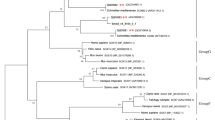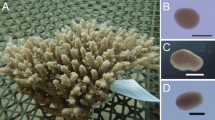Abstract
In this study, we report the expression and identification of a PREB-related gene from the planarian Dugesia japonica, DjPreb. The planarian DjPreb cDNA is comprised of 1101 bp and contains a 972 bp open reading frame corresponding to a deduced protein of 323 amino acids with a 69 bp 5’-UTR and a 60 bp 3’-UTR. Phylogenetic analysis shows that DjPreb is PREB/PREB-like members. We examined its spatial and temporal expression and distribution in both intact and regenerating planarians by Relative quantitative real-time PCR and Whole-mount in situ hybridization. The analysis indicates that DjPreb shows a gradient express with peak levels present in the anterior and posterior regions and progressively lower levels in central regions in intact and regenerating planarians. During regeneration the expression of DjPreb is upregulated. Strong expression of DjPreb is observed in the anterior and posterior blastemas. These results suggest that DjPreb may participate in head and tail formation.
Similar content being viewed by others
References
Neer E.J., Schmidt C.J., Nambudripad R., Smith T.F. 1994. The ancient regulatory-protein family of WD-repeat proteins. Nature. 371, 297–300.
Smith T.F., Gaitatzes C., Saxena K., Neer E.J. 1999. The WD repeat: A common architecture for diverse functions. Trends Biochem. Sci. 24, 181–185.
Li D., Roberts R. 2001. WD-repeat proteins: Structure characteristics, biological function, and their involvement in human diseases. Cell Mol. Life Sci. 58, 2085–2097.
van Nocker S., Ludwig P. 2003. The WD-repeat protein superfamily in Arabidopsis: Conservation and divergence in structure and function. BMC Genomics. 4, 50.
Saeki M., Irie Y., Ni L., Yoshida M., Itsuki Y., Kamisaki Y. 2006. Monad, a WD40 repeat protein, promotes apoptosis induced by TNF-alpha. Biochem. Biophys. Res. Commun. 7, 568–572.
De la Cruz J., Sanz-Martínez E., Remacha M. 2005. The essential WD-repeat protein Rsa4p is required for rRNA processing and intra-nuclear transport of 60S ribosomal subunits. Nucleic Acids Res. 33, 5728–5739.
Garcia-Higuera I., Fenoglio J., Li Y., Lewis C., Panchenko M.P., Reiner O., Smith T.F., Neer E.J., 1996. Folding of proteins with WD-repeats: comparison of six members of the WD-repeat superfamily to the G protein beta subunit. Biochemistry. 35, 13985–13994.
Fritzius T., Burkard G., Haas E., Heinrich J., Schweneker M., Bosse M., Zimmermann S., Frey A.D., Caelers A., Bachmann A.S., Moelling K. 2006. WD-FYVE protein binds to the kinases Akt and PKCzeta/lambda. Biochem J. 399, 9–20.
Saxena K., Gaitatzes C., Walsh M.T., Eck M., Neer E.J., Smith T.F. 1996. Analysis of the physical properties and molecular modeling of Sec13: A WD repeat protein involved in vesicular traffic. Biochemistry. 35, 15215–15221.
Fritzius T., Frey A.D., Schweneker M., Mayer D., Moelling K. 2007. WD-repeat propeller-FYVE protein, ProF, binds VAMP2 and protein kinase Czeta. FEBS J. 274, 1552–1566.
Mishima M., Nishida E. 1999. Coronin localizes to leading edges and is involved in cell spreading and lamellipodium extension in vertebrate cells. J. Cell. Sci. 112, 2833–2842.
Pollmann M., Parwaresch R., Adam-Klages S., KruseM. L., Buck F., Heidebrecht H.J. 2006. Human EML4, a novel member of the EMAP family, is essential for microtubule formation. Exp. Cell Res. 312, 3241–3251.
Humphrey T., Enoch T. 1998. Sum1, a highly conserved WD-repeat protein, suppresses S-M checkpoint mutants and inhibits the osmotic stress cell cycle response in fission yeast. Genetics. 148, 1731–1742.
Yoon Y.M., Baek K.H., Jeong S.J., Shin H.J., Ha G.H., Jeon A.H., Hwang S.G., Chun J.S., Lee C.W. 2004. WD repeat-containing mitotic checkpoint proteins act as transcriptional repressors during interphase. FEBS Lett. 575, 23–29.
Ogawa T., Shiga K., Hashimoto S., Kobayashi T., Horii A., Furukawa T. 2003. APAF-1-ALT, a novel alternative splicing form of APAF-1, potentially causes impeded ability of undergoing DNA damage-induced apoptosis in the LNCaP human prostate cancer cell line. Biochem. Biophys. Res. Commun. 306, 537–543.
Fliss M.S., Hinkle P.M., Bancroft C. 1999. Expression cloning and characterization of PREB (prolactin regulatory element binding), a novel WD motif DNA-binding protein with a capacity to regulate prolactin promoter activity. Mol. Endocrinol. 13, 644–657.
Ohtsuka S., Murao K., Imachi H., Cao W.M., Yu X., Li J., Iwama H., Wong, N.C., Bancroft C., Ishida T. 2006. Prolactin regulatory element binding protein as a potential transcriptional factor for the insulin gene in response to glucose stimulation. Diabetologia. 49, 1599–1607.
Adoutte A., Balavoine G., Lartillot N., Lespinet O., Prud’homme B., de Rosa R. 2000. The new animal phylogeny: reliability and implications. Proc. Natl. Acad. Sci. USA. 97, 4453–4456.
Reddien P.W., Sánchez Alvarado A. 2004. Fundamentals of planarian regeneration. Annu. Rev. Cell Dev. Biol. 20, 725–757.
Agata K., Saito Y., Nakajima E. 2007. Unifying principles of regeneration. 1: Epimorphosis versus morphal-laxis. Dev. Growth Differ. 49, 73–78.
Qu X., Wang Y., Geng W., Zhao B. 2008. Construction of cDNA library and trial EST analysis from planaria ( Dujesia japonica). Sichuan J. Zool. 127, 205–209.
Rehm B.H. 2001. Bioinformatic tools for DNA/protein sequence analysis, functional assignment of genes and protein classification. Appl. Microbiol. Biotechnol. 57, 579–592.
Altschul S.F., Madden T.L., Schaffer A.A., Zhang J., Zhang Z., Miller W., Lipman D.J. 1997. Gapped BLAST and PSI-BLAST: A new generation of protein database search programs. Nucleic Acids Res. 25, 3389–3402.
Burland T.G. 2000. DNASTAR’s Lasergene sequence analysis software. Methods Mol. Biol. 132, 71–91.
Felsenstein J. 1993. PHYLIP (Phylogeny Interference Package), version 3.5c, Seattle, WA: Department of Genetics. University of Washington.
Wang Y., Zhao B., Zhang S., Qu X. 2008. Characterization, expression and localization of S-adenosylho-mocysteine hydrolase from amphioxus Branchiostoma belcheri tsingtaunese. Biosci. Rep. 28, 135–144.
Palakodeti D., Smielewska M., Graveley B.R. 2006. MicroRNAs from the planarian Schmidtea mediterranea: A model system for stem cell biology. RNA. 12, 1640–1649.
Jiang Y., Loker E.S., Zhang S.M. 2006. In vivo and in vitro knockdown of FREP2 gene expression in the snail Biomphalaria glabrata using RNA interference. Dev. Comp. Immunol. 30, 855–866.
Reddien P.W., Bermange A.L., Kicza A.M., Sánchez Alvarado A. 2007. BMP signaling regulates the dorsal planarian midline and is needed for asymmetric regeneration. Development. 134, 4043–4051.
Palakodeti D., Smielewska M., Lu Y.C., Yeo G..W., Graveley B.R. 2008. The PIWI proteins SMEDWI-2 and SMEDWI-3 are required for stem cell function and piRNA expression in planarians. RNA. 14, 1174–1186.
Kozak M. 1987. An analysis of 5’-noncoding sequences from 699 vertebrate messenger RNAs. Nucleic Acids Res. 15, 8125–8148.
Koinuma S., Umesono Y., Watanabe K., Agata K. 2003. The expression of planarian brain factor homologs, DjFoxG and DjFoxD. Gene Expr. Patterns. 3, 21–27.
Sánchez Alvarado A., Newmark P.A., Robb S.M., Juste R. 2002. The Schmidtea mediterranea database as a molecular resource for studying platyhelminthes, stem cells and regeneration. Development. 129, 5659–5665.
Handberg-Thorsager M., Fernández E., Salã E. 2008. Stem cells and regeneration in planarians. Front Biosci. 13, 6374–6394.
Taylor Clelland C.L., Levy B., McKie J.M., Duncan A.M., Hirschhorn K., Bancroft C. 2000.Cloning and characterization of human PREB; a gene that maps to a genomic region associated with trisomy 2p syndrome. Mamm. Genome. 11, 675–681.
Rossi L., Salvetti A., Lena A., Batistoni R., Deri P., Pugliesi C., Loreti E., Gremigni V. 2006. DjPiwi-1, a member of the PAZ-Piwi gene family, defines a subpopulation of planarian stem cells. Dev. Genes Evol. 216, 35–46.
Author information
Authors and Affiliations
Corresponding author
Additional information
Published in Molekulyarnaya Biologiya, 2010, Vol. 44, No. 1, pp. 13-19.
Rights and permissions
About this article
Cite this article
Yuan, Z.Q., Zhao, B.S., Zhang, J.Y. et al. Characterization and expression of DjPreb gene in the planarian Dugesia japonica . Mol Biol 44, 8–13 (2010). https://doi.org/10.1134/S0026893310010024
Received:
Accepted:
Published:
Issue Date:
DOI: https://doi.org/10.1134/S0026893310010024




